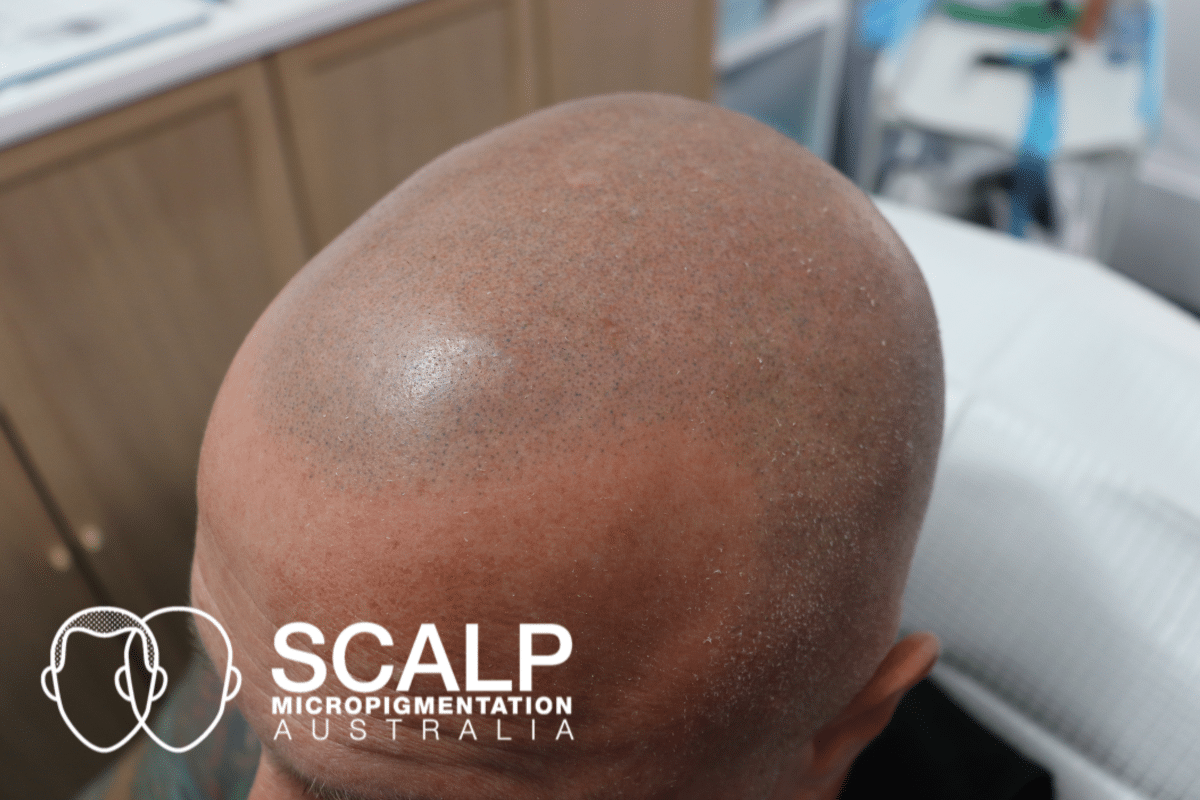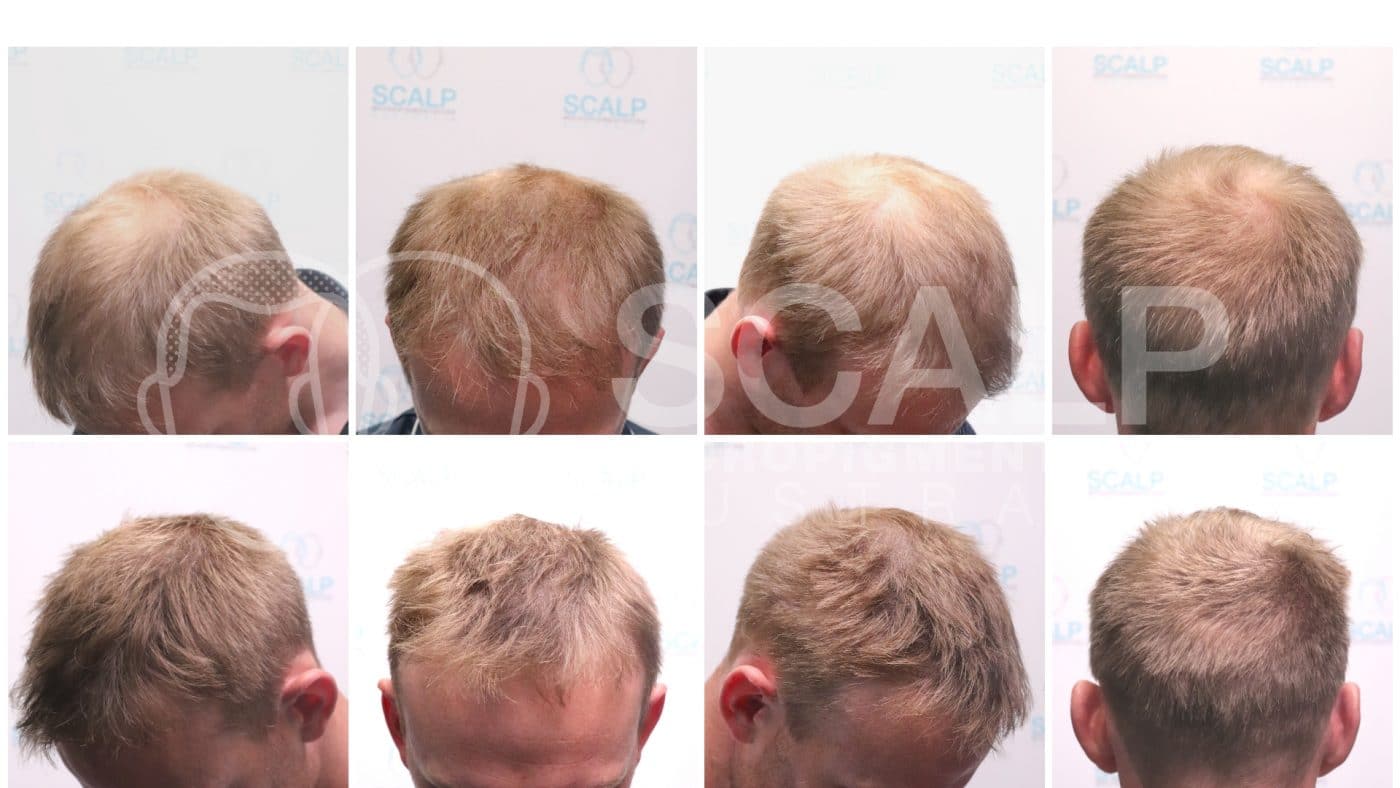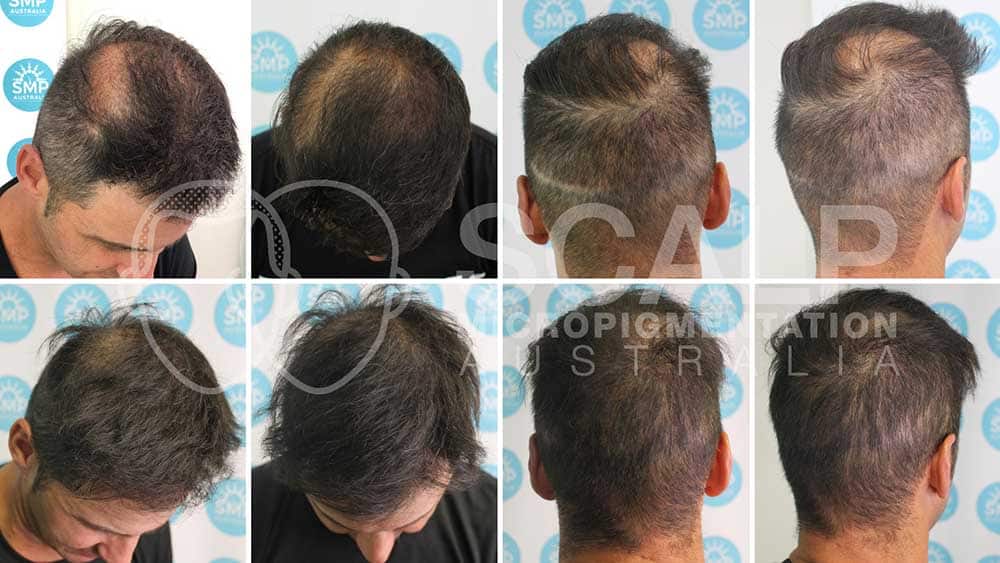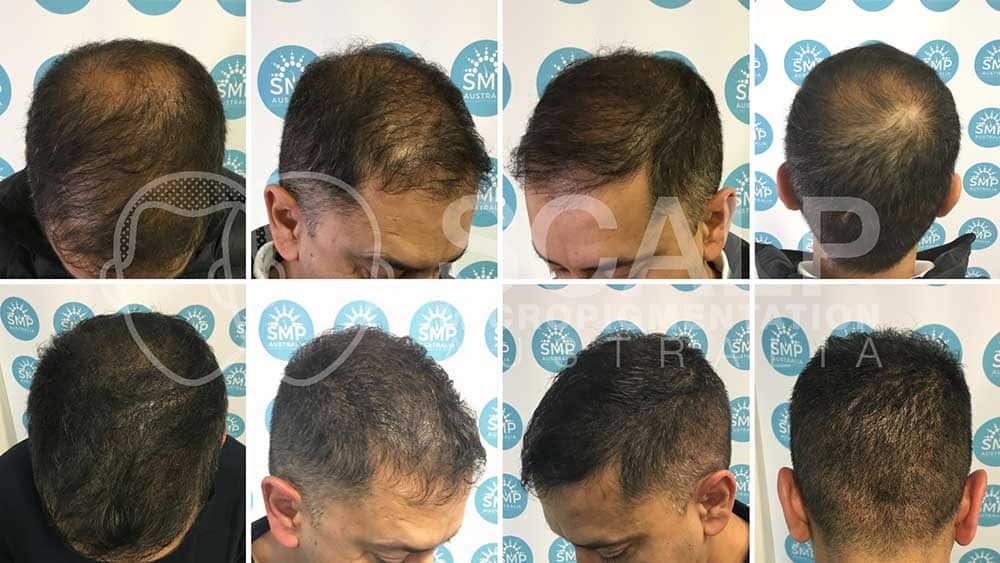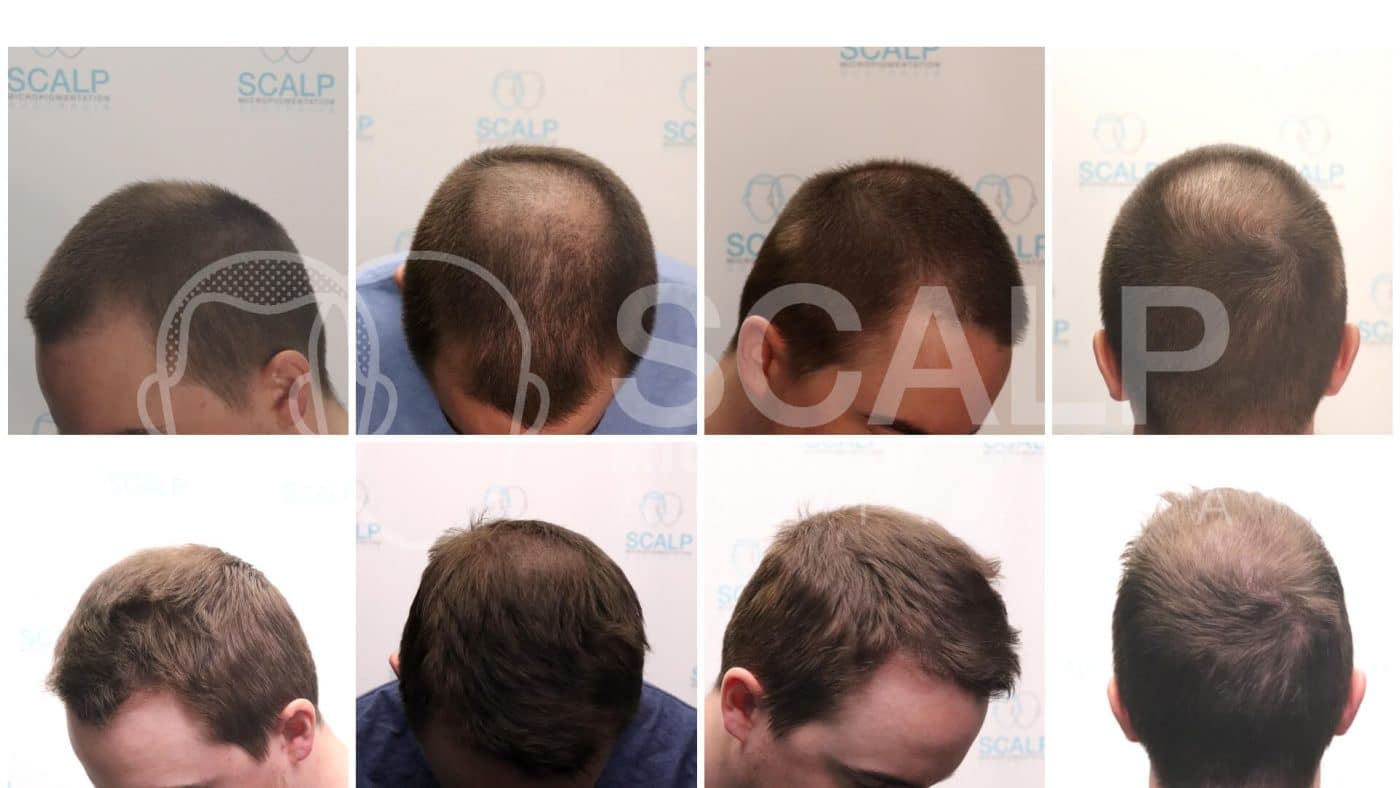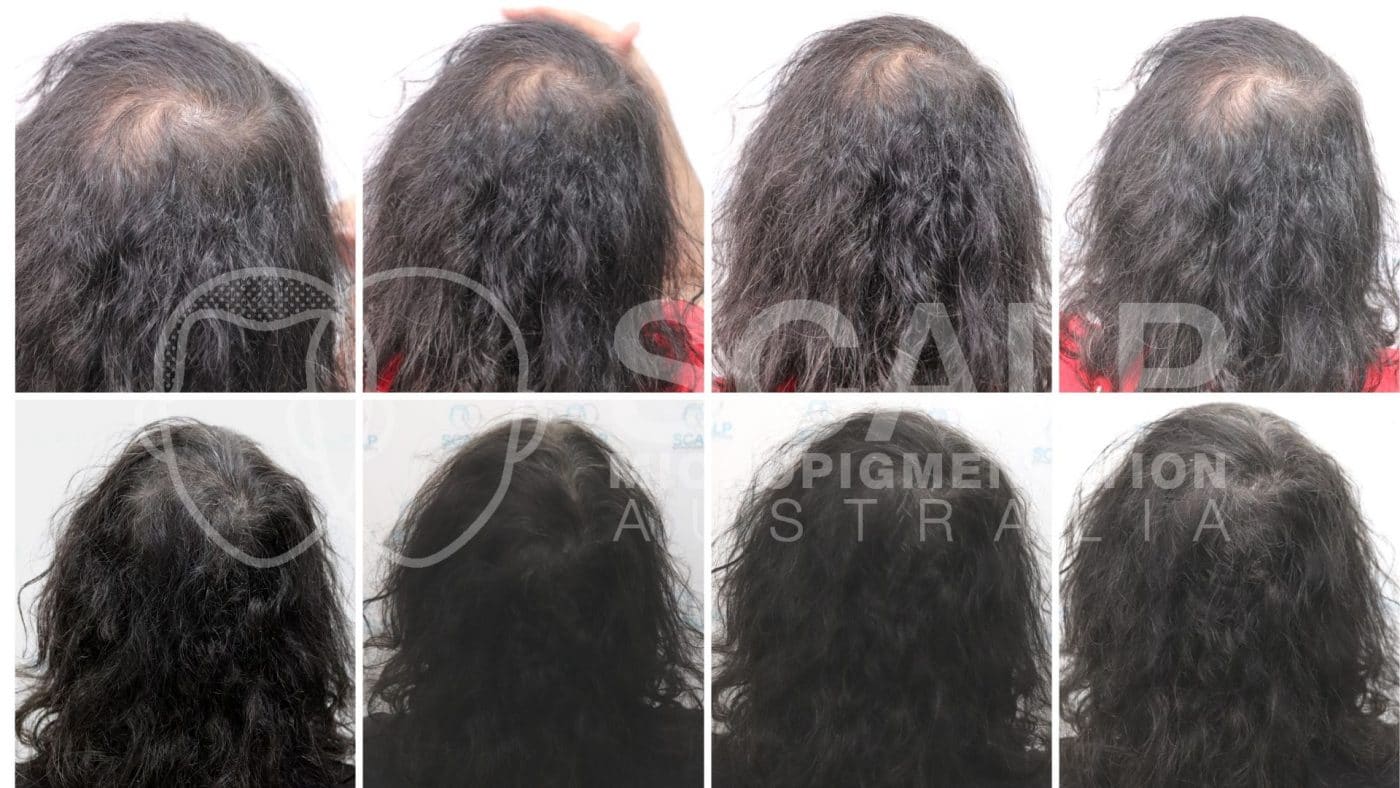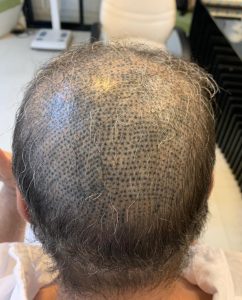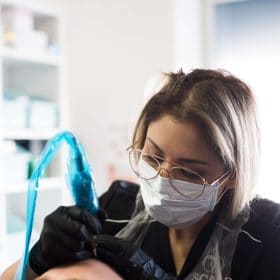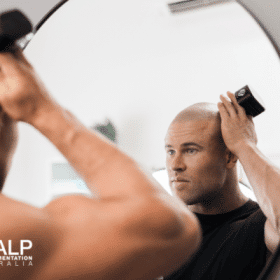

What is Scalp Micro Pigmentation?
Quite simply, Scalp MicroPigmentation is the process of using tiny needles to implant pigment into the scalp – similar to cosmetic make-up tattooing and body art tattooing. The needles make small impressions that look like hair stubble lasting 3-5 years approximately before requiring re-darkening. This treatment (when done by a professional) is undetectable to the naked eye.
Scalp MicroPigmentation has now been around for over 12 years. It is still considered an ’emerging’ industry, but there are now thousands of SMP artists around the world.
Scalp MicroPigmentation can still be considered by some as a risky treatment, due to the amount of poor work being completed by untrained or beginner artists performing treatments without adequate experience. Just like any profession, it takes time to build the necessary skills and technique to become good at anything. All of the artists at our company have a minimum of 5 years experience or 500 treatments. So rest assured, you are in the best hands.
We work with many men and women, using scalp micropigmentation to restore their confidence. Often we hear how men and women look older than they feel, or their look doesn’t represent their personality or outlook on life. Scalp MicroPigmentation Australia has clinics in Adelaide, Melbourne, Sydney and Brisbane, and are Australia’s leading baldness cure clinic, we create the most natural and undetectable results.
Lead practitioner Caitlin James along with Emma, Claudia, Maria and Anita have an artistic eye for detail, shaping every hairline to suit each clients’ individual taste.
Many clients seeking a baldness or hairloss cure, long to get their original hairline back – with Scalp MicroPigmentation we can achieve this and more.
The right hair length for Scalp Micropigmentation explained….
If you have fine stubble all over, keeping the hair very short with clippers or beard trimmers every few days is recommended to keep the stubble close to the scalp. This is a nice length if there is still hair in the area.
Shaved Head
If the hair loss pattern is more advanced, using a razor, rotary shaver or foil shaver is the best option to keep the Scalp MicroPigmentation and hair looking the same.
Caitlin, Emma, Claudia, Maria, Ari and Anita can also suggest grooming ideas during your free consultation, to help you understand the importance of clipping to achieve the best result. More information on The Right Hair Length for Scalp MicroPigmentation can be found here.
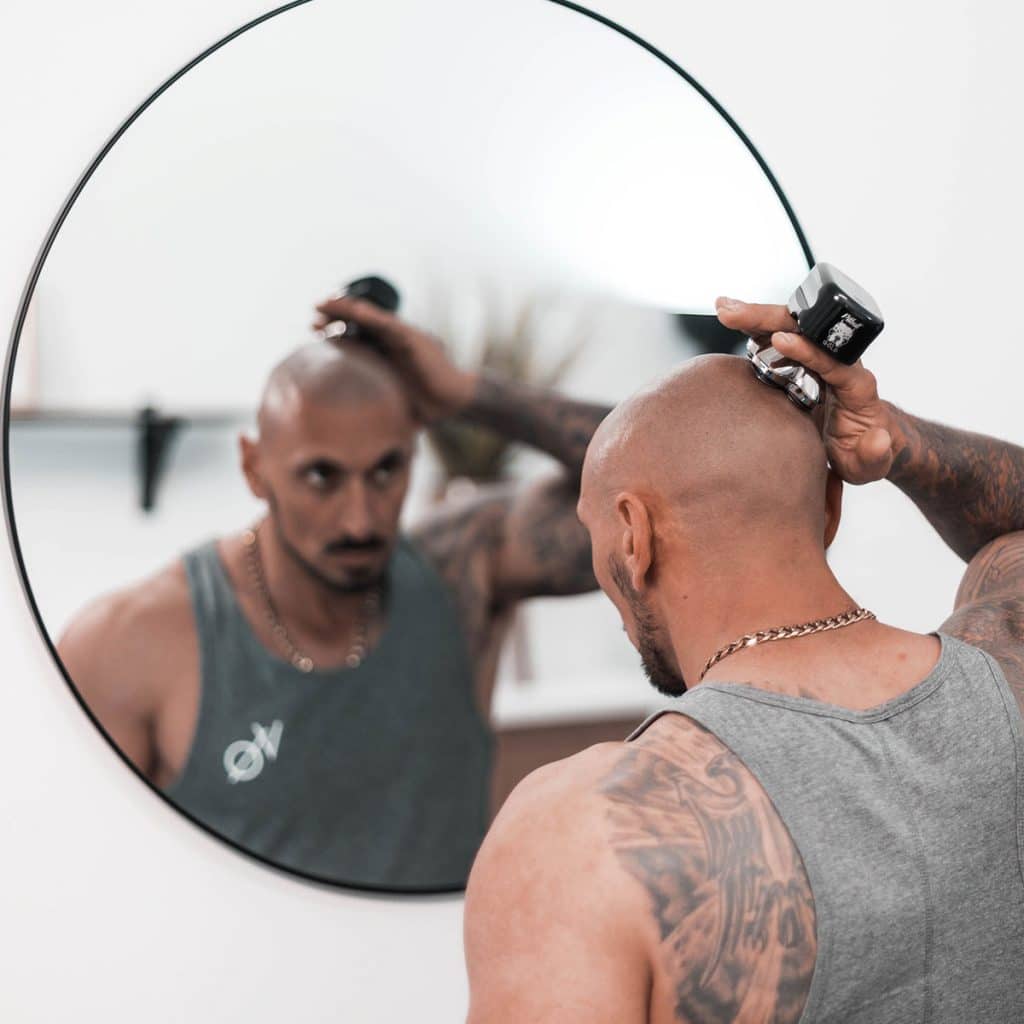
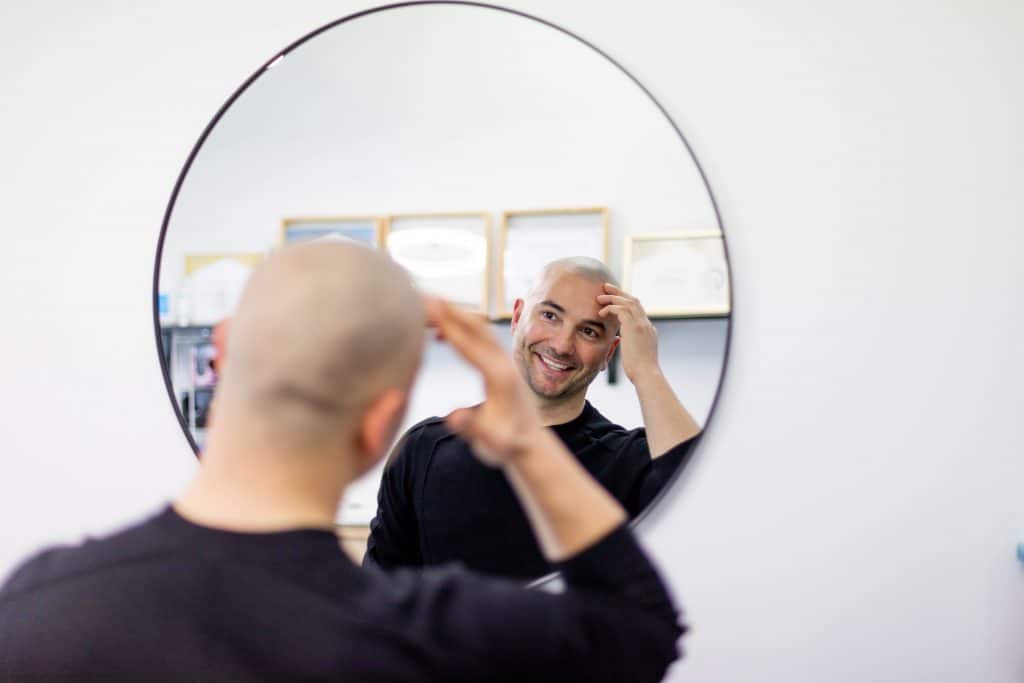
The most important element of the Scalp Micropigmentation baldness cure procedure is a natural looking hairline.
Hairlines
The hairline is the focal point of the baldness cure and if performed incorrectly it can lead to devastating results. With Scalp MicroPigmentation Australia’s unique ability to build and layer soft and natural hairlines, you’re in good hands.
Soft hairlines give a natural look to Scalp MicroPigmentation and are best suited to those who wish for the result to be as undetectable as possible.
The edge-up look is fuller and straighter, offering that ‘just stepped out of the barbers’ appearance. This sharp and fresh look suits darker skin tones and is generally an older style of SMP.
What happens when I go grey?
Grey Hair
One of our most frequently asked questions. What happens when I go grey?
Well, we can show you!
Our featured client has white hair – keeping his white hair shaved with a blade every few days keeps the light from reflecting too much off the white hair, as he has no hair in the crown and front hairline. The SMP is soft and looks like soft grey stubble. This Scalp MicroPigmentation is completely undetectable and provides an excellent baldness cure solution.
What is the long term maintenance of Scalp Micropigmentation?
This is a great question, you need to be fully aware and informed about the longevity of Scalp MicroPigmentation so you can make an informed decision if this is the right hair loss solution for you.
We suggest every year to book a review appointment so a professional can have a look at your result and give you some advise. We usually see clients every 3-4 years for re-darkening appointments. There are various factors that contribute to how well somebody holds their result. Factors that may contribute to someone fading their result quicker include how fast their cellular metabolism fades the pigment, how much sun their scalp sees, if their skin is oily, medications, other hair loss treatments combined with SMP. Skins that are mature, advanced hair loss, dry and have SPF applied tend to hold the result better for longer. We recorded this video with Ollie Hughes Scalp MicroPigmentation Artist in London about this exact topic. Check out the information here.
Scalp MicroPigmentation adds the illusion of density and volume to your hair.
Long Hair
If you have undergone hair transplant surgery or have thinning hair, consider using Scalp Micropigmentation to add the illusion of density and volume to your hair.
We place pigments between the hair to reduce the visibility of the scalp seen through the hair.
Typically guys with dark hair look at this option, as the scalp (which is flesh tone) shows through against their dark hair. Reducing this contrast makes the hair appear thicker.
It is advised to be well informed if this is the right hair loss solution for you. There is so much information online – a reliable trusted source is a company called Team Micro – we chat with the founder Damien Porter who explains how this company started and how it can help those who are looking into Scalp MicroPigmentation which you can find here.
Alopecia
Alopecia is the medical term used for hair loss. There are many different types of hair loss that affect both young and old, male and female with many different symptoms and causes.
The most common form of male hair loss is ‘Male Pattern Baldness’ or ‘Male Pattern Hair Loss’. This form of hair loss is called Alopecia Androgenetic. It’s a condition that affects at least 50% of men by the time they are 50 years of age. It usually starts in the late twenties and follows a pattern.
This male hair loss pattern starts at the front area receding backwards towards the crown. Followed by thinning in the crown and temples. Advanced hair loss is seen when there is a distinct ‘horseshoe’ shape around the back and sides of the head. Male pattern baldness is a hereditary condition.
The main reason for this hair loss or, miniaturisation of hair is due to a hormone called ‘Dihydrotestosterone’. This biological process is where hair shafts become smaller and thinner over time and eventually fall out.
How does hair Miniaturise?
The hair follicle growth cycle consists of three phases: A growing phase (anagen), a transitional phase called catagen and a resting phase called telogen. In genetically susceptible hair follicles, a hormone called DHT can cause the growth phase of the hair cycle to become shorter. The hair produced by these affected follicles can not grow to full size due to the shorter growth window and over a period of time they eventually disappear.
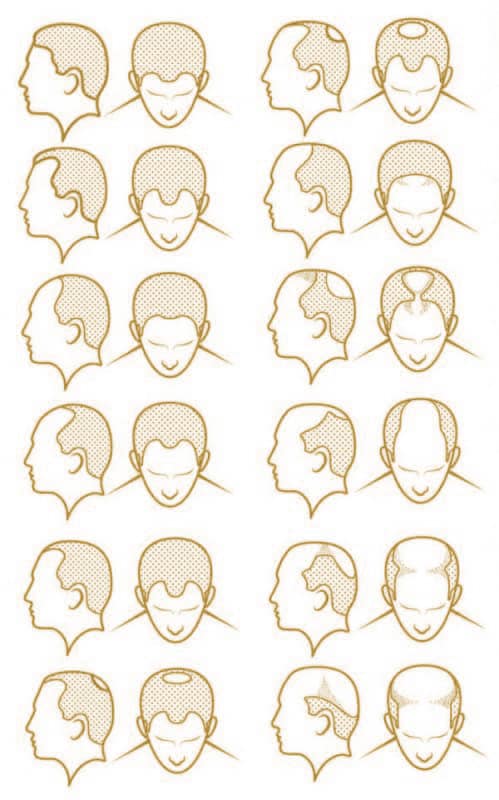
DHT Resistance
In some areas of the scalp, there are follicles that don’t respond to the DHT effects. These follicles are said to be immune to DHT and as a result, the hair remains thick and in the active phase of growth as normal. These areas immune to DHT are most often the back and sides of the scalp.
Scalp MicroPigmentation can be used to give the illusion of density between hair transplants, the appearance of a full head of stubble and camouflage scarring.
When an enzyme in our system called 5-alpha reductase type 2 converts the hormone testosterone into DHT – why not stop this process! There are medications available to do this that require a prescription.
Counteracting the effects of DHT
The hair loss medication blocks the process causing hairs to remain growing as normal. Many hair transplant patients use the medication to retain their natural growth around the newly transplanted hairs however long term some clients experience side effects and stop the medication, therefore lose their natural growth exposing the hair transplants which now appear sparse.
This is where Scalp MicroPigmentation can be used to give the illusion of density between the hair transplants, or for those who are happy to shave their hair, give the appearance of a full head of stubble and camouflage the scarring in the donor site.
Minoxidil is another popular medication taken by tablet or applied topically purchased over the counter at a chemist or stronger on a prescription. This medication counter-acts the effects of DHT but in a different way. DHT shortens the growth phase of the hair cycle leading to progressively smaller hairs. Minoxidil works by lengthening the growth phase of the hair cycle.
When clients start minoxidil, it is common to experiencing some initial shedding of hair which can be distressing at first, but as the hair cycle normalises, hair growth returns and comes back thicker. Some of our clients stay on minoxidil and use Scalp MicroPigmentation to add the illusion of density – particularly if these clients have used hair thickening fibres until now and want a more permanent form of camouflage.
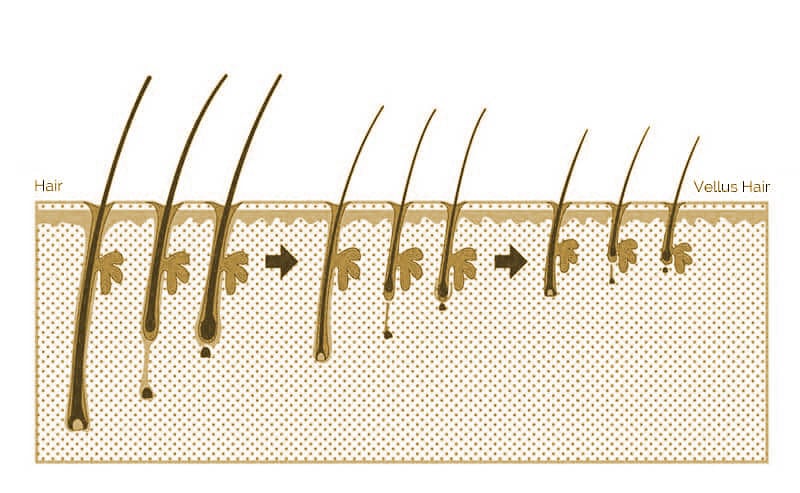
Our Latest Blog Posts
How many sessions are needed for SMP?
Why the different opinions? So you have decided to look into SMP and are confused [...]
Bad SMP & Repair Work
You chose the wrong artist? So you decided to have your SMP done by someone [...]
More Information on Scalp MicroPigmentation – Team Micro
If you are in the research phase of finding out about Scalp MicroPigmentation, make sure [...]
Long Term Maintenance of Scalp MicroPigmentation
It is important to consider the long-term maintenance of Scalp MicroPigmentation so you can make [...]
The Right Hair Length for Scalp MicroPigmentation
Caitlin James interviews Marc Allen from Creative Scalps located in London UK and discusses the [...]
The Real Life Struggles Of Living With Hair Loss
Looking into hair loss solutions does not make you vain. It is a solution to [...]
Does Scalp Micropigmentation hurt?
This question is one of the most popular questions i get asked, and the answer [...]
The Best Shaver or Clipper for Scalp MicroPigmentation
Through the feedback of our clients, we continuously ask about what clippers they have found [...]



